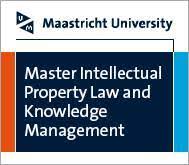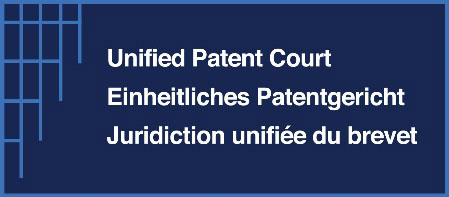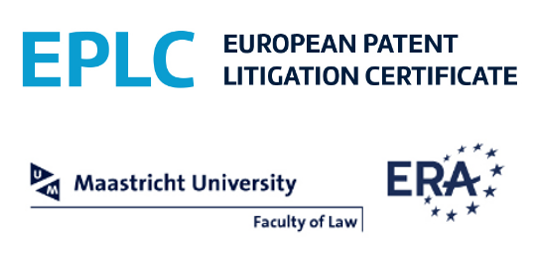Rule 262A – Protection of Confidential Information
Print this page1. Without prejudice to Article 60(1) of the Agreement and Rules 190.1, 194.5, 196.1, 197.4, 199.1, 207.7, 209.4, 315.2 and 365.2 a party may make an Application to the Court for an order that certain information contained in its pleadings or the collection and use of evidence in proceedings may be restricted or prohibited or that access to such information or evidence be restricted to specific persons.
2. The Application shall contain the grounds upon which the applicant believes the information or evidence in question should be restricted in accordance with Article 58 of the Agreement.
3. The Application shall be made at the same time as lodging a document containing the information or evidence and shall provide a copy of the unredacted relevant document and, if applicable, a copy of the redacted document.
4. The Court shall invite written comments from the representatives of the other parties prior to making any order.
5. The Court may allow the Application considering in particular whether the grounds relied upon by the applicant for the order significantly outweigh the interest of the other party to have full access to the information and evidence in question.
6. The number of persons referred to in paragraph 1 shall be no greater than necessary in order to ensure compliance with the right of the parties to the legal proceedings to an effective remedy and to a fair trial, and shall include, at least, one natural person from each party and the respective lawyers or other representatives of those parties to the legal proceedings.
7. The Registrar shall as soon as practicable take all such steps with regard to access to the evidence as may be necessary to give effect to the order of the Court under this Rule.
Relation with Agreement: Article 58
Case law
IPPT20240327, UPC CFI, LD Düsseldorf, Fujifilm v Kodak
Confidentiality club membership rules are to balance (i) the right to have unlimited access to the file documents against (ii) the interest to protect confidential information, on the facts of a particular case (Article 58 UPCA, Rule 262A RoP). Whereas certain guidelines how this balance can be struck may be developed, a schematic solution is not possible. Request, that employees from claimant’s R & D department must not be granted access, denied. Claimant sets out in detail with persuasive arguments why it is necessary to exchange with these employees exactly, who are in a position to comment on defendants’ allegations before the background of the technical expertise in and knowledge of the industry sector. In a dispute revolving around technical aspects it is of fundamental importance that a party may have resort to technically qualified employees in order to exercise its right to be heard. Only in rare circumstances where e.g. cutting-edge technical improvements are at stake, which put the proprietor in a significant pole position on the market, further restrictions may be considered to be proportionate. This is not the case here. Requests of the defendants to set out in further detail, in which way the claimant has to organize itself in order to prevent the breach of the court’s protective order have to be rejected. The information is sufficiently protected by the order of the court without such detailed measures to be ordered. A breach of the order will result in severe penalty payments. Rejected as manifestly disproportionate on the instant facts requests to impose upon the named employees to refrain from getting involved in research and development, pricing or any other competitive decision making, and shall not be involved in prosecution of patent applications for a period of 5 years after the end of the present proceedings (including potential appeal proceedings).
IPPT20240326, UPC CFI, LD Paris, C-Kore Systems v Novawell
Confidentiality club which with the consent of both parties does not include “one natural person from each party” (Article 58 UPCA, Rule 262A RoP). In view of all these facts, the Court notes that there is an agreement between the parties on the composition of the confidentiality club and that this proposal by the parties is in accordance with the principle of a fair trial. Even though Rule 262A RoP provides that the confidentiality club shall include at least one natural person from each party, the Court considers that it is possible for the parties to exclude access by a natural person by mutual agreement, provided that the principle of a fair trial is not affected. (UPC-CFI-239/2023, The Hague LD, Order of 4 March 2024 on confidentiality) [IPPT20240304]
IPPT20240311, UPC CFI, LD Düsseldorf, 10x Genomics v Curio Bioscience
Confidentiality club membership rules (Rule 262A RoP): a) should not be greater than necessary to ensure that the right of the parties to the proceedings to an effective remedy and a fair trial is respected, b) must include at least one natural person from each party and the respective lawyers or representatives. c) Is, in principle, the responsibility of the respective party to name the persons for membership d) the exclusion of a person cannot be justified solely on the grounds that the designated person is active in the technical field related to the patent in question. It is precisely for this reason that the person concerned is often only in a position to provide their company and its representatives with the information required for effective legal action. e) members must comply with the confidentiality obligations imposed on them, which can be enforced, if necessary, by the imposition of fines or enforced in accordance with national law. f) membership must always be subject to a case-by-case examination and, if necessary and appropriate, adapted to the requirements of the respective proceedings.
IPPT20240304, UPC CFI, LD The Hague, Plant-e v Arkyne
Possible for the parties by mutual agreement to establish an “attorneys’ eyes only’’ restricted-access group for confidential information and exclude access by a natural person from each party, provided that fair trial is not affected. (Article 58 UPCA, Rule 262A RoP, Article 9 Trade Secret Directive). Principle of fair trail not likely to be impaired where the confidential information is a side issue (providing security for costs of a party, Rule 158 RoP). Confidential Information:non-public financial information concerning sales and investments is information that is generally considered to be confidential, especially vis-à-vis a competitor.
IPPT20240223, UPC CFI, LD Düsseldorf, 10x Genomics v Curio Bioscience
Because of article 9(2) Trade Secrets Directive and Rule 262A(6) RoP at least one natural person from a party must have access to confidential information, even though such is not provided for in article 58 UPCA. In the interest of effective protection of “confidential information” protection the requirement to invite written comments prior to secrecy order only applies to the final secrecy order and access restriction (article 58 UPCA, Rule 262A RoP). With regard to “trade secrets” access can be further restricted to party representatives until a final order is issued (Article 9 Trade Secrets Directive). Discussion of the confidentiality application with the party is possible with the redacted versions of the documents concerned. Generally, a preliminary limitation to four lawyer representatives (two partners and two associates to support them), two patent attorney representatives and three representatives of the client appears appropriate, whereby this group of persons can be extended by two paralegals if necessary (Rule 262A(6) RoP). In order to take into account the special features of summary proceedings, the group of persons required for a fair trial (Rule 262A.6 RoP) must be selected in such a way that the party affected by the provisional secrecy protection order is fully capable of working and in a position to comment on the merits of each point raised by the opposing party, taking into account the confidentiality interests of the opposing party. Since the group of persons who are granted access to the (allegedly) confidential information must not exceed the scope necessary to ensure compliance with the right of the parties to the proceedings to an effective legal remedy and a fair trial (Rule 262A(6) RoP,) the group of persons entitled to access must always be subject to a case-by-case examination, taking into account the above considerations, and, if necessary and appropriate, adapted to the requirements of the respective proceedings.
IPPT20240223, UPC CFI, LD Düsseldorf, 10x Genomics v Curio Bioscience II
Set time limit of 1 March 2024 for replying to defendant’s statement of objection not extended to the conclusion of the confidentiality procedure of Rule 262A RoP (Rule 9(3) RoP). The redacted version of the statement of objection was already available to all representatives of the applicant as well as to the applicant itself on 15 February 2024. Only access to the unredacted version was restricted. The information classified as confidential by the defendant only concerns a very limited part of the statement of objection. Moreover, it is exclusively of a non-technical and purely commercial nature. It is not apparent from the grounds for the request for an extension of the time limit that, and if so for what reasons, the applicant is not in a position to reply to the statement of objection within the time limit set.
IPPT20240214, UPC CFI, LD Mannheim, Panasonic v Xiaomi
Submission of SEP Patent Licenses. There is typically a recognisable need for confidentiality of business-related information contained in licence agreements and only permit submission upon a court order, which may require involving the respective license agreement partner in the proceedings. Incremental 13-step procedure enables the parties to obtain comprehensive protection of secrets and allows the parties to submit the documents in the protected proceedings even without a court order to produce them (Rule 262A RoP, Rule 190 RoP). The confidentiality regime (Rule 262 RoP, Rule 262A RoP) is organised as follows:.
1) Upload the document containing confidential information without any redaction
(see also the order of the Düsseldorf Local Chamber of 14 February 2024 [[in 10x Genomics v Curio Bioscience, IPPT20240214].
2) Indicate in the CMS that the document contains confidential information
3) Upload a redacted version of the document
4) Start the separate CMS workflow (a “related proceeding”) for Rules 262/262A and again select and confirm the documents to be kept secret
5) The request under (4) can be linked to an intra-procedural condition to the effect that the document is only to be deemed to have been filed and may be used in the proceedings by the opposing party and by the court in the proceedings if the court grants to the request
6) If the court intends not to grant the application or to grant it only in part, it shall grant the applicant a hearing beforehand and request him to make the final decision as to whether the document should be deemed to have been submitted and can be taken into further consideration by the opponent and the court in the proceedings when making its decision.
7) In response to the request under (4) the court shall, as a first step, issue a provisional secrecy protection order which, on the basis of the applicant's unilateral submission to date that the document contains information to be kept secret, places it under comprehensive protection for the time being before the document is made accessible to the opposing legal representative - and initially only to him.
8) If the filing of the document is conditional pursuant (5), the opposing counsel shall initially be authorised to use the document solely for the purpose of submitting his observations on the application pursuant to Rule 262A of the Rules of Procedure.
9) After the interim order fully protecting the document for the purposes of the observations has been issued, or at the same time as it is issued, the court shall order the Registry to make the relevant confidential documents available to the opposing party in their unredacted version via the CMS.
10) If the opposing lawyer indicates that he is not in a position to comment on the confidential nature of the information contained in the document until he has consulted with a natural person from his party, he must name this person or persons.
12) If the court considers the application to be only partially allowable or not allowable, it shall inform the applicant of this prior to the decision and give the applicant the opportunity to comment if the application was subject to the condition under (5).
13) In the event of a request for access to the file by a third party not involved in the proceedings pursuant to Rule 262(3) RoP of the Rules of Procedure, the document is protected from access by the parallel request pursuant to Rule 262(2) RoP and is not part of the access to the file by third parties.
IPPT20240214, UPC CFI, LD Düsseldorf, 10x Genomics v Curio Bioscience
Incremental procedure for protection of confidential information in the Rule 262A CMS workflow, grants provisional secrecy protection. Both a redacted and unredacted version of the documents concerned need to be uploaded in the CMS and at the same time file a secrecy protection request for these documents via the workflow provided for this purpose in accordance with Rule 262A RoP. If this option is used, only the redacted version is initially visible to the opposing party until the unredacted version is released by the sub-registry of the local division on the explicit instruction of the judge. Prior to this release, the CMS gives the rapporteur the opportunity within the R. 262A workflow to issue orders for the provisional protection of the (allegedly) confidential documents. As a rule, the judge-rapporteur will follow the applicant's initially unilateral assessment of the confidential nature of the document and, by means of such an order, restrict the group of persons authorised to access the document until the final decision on the application for secrecy protection. In a first step, the document is initially only released to the opposing party's representative, unless the applicant himself authorises the release to other persons yet to be named by the opposing representative. Because of principles of fairness and fairness (Preamble (5) RoP) , the party seeking confidentiality will be informed and given opportunity to comment, if on the basis of the content of the application for protection of confidential information, the judge-rapporteur considers such a provisional secrecy protection order to be dispensable in exceptional cases. The opportunity to comment, which must be granted at the same time, offers the party concerned the opportunity to react to the threat of unprotected disclosure of the information it considers to be confidential and, if necessary, to declare that the documents in question should not be made the subject of the proceedings, or not in their entirety. As a result, all documents submitted together with an application for secrecy protection pursuant to Rule 262A RoP are subject to provisional secrecy protection.
IPPT20240130, UPC CFI, LD Paris, Abbott v Dexcom
One division is not bound by a decision in another division despite belonging to the same unified court. Discrepancy in the fines (€ 50.000 v € 250.000) set by the Local Division Paris and the Local Division Munich for breach of confidentiality orders (Rule 262 RoP, Rule 262A RoP) in parallel proceedings between the same parties concerning the same protected confidential information regarding two different patents. No justified need to harmonise the amount of the fine because one division is not bound by a decision in another division despite belonging to the same unified court. The Judge-Rapporteur was justified in considering that part of the confidential information had already been disclosed without a confidentiality restriction and that a lower amount of the fine would sufficiently protect the legitimate interests of the parties in the event of a breach. Therefore, a maximum fine amount of EUR 50,000 in case of breach is appropriate and proportionate in the contested confidentiality order and there is no need to set a higher maximum amount for the fine. No need for amendment of the order to avoid the potential risk of a double fine: it will be at the Court’s discretion, at the time of any breach, to decide on the appropriate amount of a fine to be paid, taking into account all elements in concreto, including any previous fine decided by the UPC Munich Local Division for the same breach. There is no grounds to bind the Paris Local Division, in case of breach and as requested by Dexcom, in cases where the Munich Local Division has already imposed a fine.
IPPT20231227, UPC CFI, LD Munich, KrausMaffei v Troester
Protection of confidential information (Rule 262A RoP). The protection of confidential information contained in pleadings and annexes can only be requested within a workflow pursuant to Rule 262 and/or 262A of the Rules of Procedure at the same time as the initial filing or within 14 days. These requests must be repeated when further pleadings and annexes are filed. In exceptional cases, limited protection under Rule 262A of the Rules of Procedure may be provided within a workflow under Rule 9 of the Rules of Procedure. Insofar as the need for protection of the information is undisputed between the parties, no further judicial review of the need for protection is required in the context of an application under Rule 262A of the Rules of Procedure. The amount of a penalty payment under Rule 354.3 of the Rules of Procedure is limited by request.
IPPT20231219, UPC CFI, LD Paris, Abbott v Dexcom
Protection of confidential information (Rule 262 RoP, Rule 262A RoP). Considering the competitive relationship between the parties, the Respondent accepts the principle of a Redacted SoD, provided that the access to the information offered to the Respondent is broad enough to ensure a fair trial (Rule 262A RoP). Access restricted on the Respondent’s side to the representatives of the Respondent as identified in the Statement of claim and their “Legal team” as designated in the CMS in charge of these proceedings (further to them having signed a Non-Disclosure Agreement to comply with this confidentiality order), the representatives of the Respondent as identified in the Statement of claim and their “Legal team” as designated in the CMS in charge of the UPC parallel proceedings involved in another action pending before the Paris LD (n° 583778/2023) and the pending proceedings before the Munich LD (n° 583791/2023 and 547520/2023) (further to them having signed a NDA to comply with this confidentiality order), the three natural persons named by the Claimant, that is to say [XXXXXXXXX], as well as experts and witnesses (further to them having signed a Non-Disclosure Agreement to comply with this confidentiality order). Respondent accepts that a breach of confidentiality should be subject to a fine to ensure the efficiency of the confidentiality order. Fine of 50.000 euros is reasonable..
IPPT20231205, UPC CFI, LD Hamburg, Avago v Tesla
Procedural order (Rule 9 RoP, Rule 262A RoP). The start of the plaintiff’s time period for lodging the Defence to the counterclaim for revocation is set for 8 November 2023 in line with the time limit for the Reply to the Statement of defence in the infringement action. This request had to be complied with, as such concurrence not only appears to be procedurally economical, but is also necessary with regard to the right to be heard, since the content of the statement of defence, including the protected information contained therein, is significant for the drafting of the Defence to the revocation action.
IPPT20231128, UPC CFI, LD Hamburg, Avago v Tesla
The start of time limit of two months for responding to the Statement of Defence which includes a Counterclaim for revocation (Rule 29a RoP) is to be set on the date of the conclusion of the R. 262A proceedings, i.e. 8 November 2023. Opposing party to be heard on synchronizing time limit for replying to the nullity counterclaim with the time limit for replying to the Statement of Defence (Rule 264 RoP).
IPPT20231117, UPC CFI, CD Munich, Astellas v Healios
Inter parties restricted access to confidential commercial information (Rule 262A RoP). Unrestricted access to specific document containing commercially sensitive information not necessary to understand Claimant’s legal position. Access restricted to specific natural persons, at least natural party form each party (not limited to employees) and the respective lawyers, or other representatives of those parties to the legal proceedings.
IPPT20231103, UPC CFI, LD Hamburg, Avago v Tesla
Confidentiality order and restriction of access (Rule 262A RoP, Article 58 UPCA). Prima facie evidence of trade secrets. The existence of a trade secret does not have to be established to the court's satisfaction, but it is sufficient if this is predominantly probable. Information on the technical implementation of the attacked embodiment is deemed to be a trade secret as well as the information relating to the purchase prices of individual chips. No protection regarding (a) information sent in a letter letter with a confidentiality requirement, but without the condition of a limitation of the circle of addressees, as now associated with the request for confidentiality and (b) information based on publicly available figures. Limitation of access. The plaintiff may only make the designated information accessible to those representatives and internally only to those employees who have a legitimate interest in it. Access is limited to the authorised representatives of the plaintiff and the following persons […]. The fact that these persons are not employed by the plaintiff itself is irrelevant.
IPPT20231004, UPC CFI, LD Hamburg, Avago v Tesla
Protection of confidential information (Rule 262A RoP). Pursuant to Rule 262A(4) RoP, the representative of the other parties must be invited to submit written comments prior to making any order. However, in the interest of effective protection of secrets, the requirement to be heard before issuing an order only applies to the final order of a secrecy order and access restriction. In the interest of effective protection of secrets under Directive (EU) 2016/943 access may be further restricted until a final order is issued, namely to the person of the claimant's representative. The discussion of the confidentiality application with the party is possible with the redacted versions of the documents concerned. In substance, the information on the product-specific design of the contested embodiment, the purchase prices of individual chips and the information on the sales result to be forecast are probably business or trade secrets. With regard to the information in Annex B 4, the details of the disclosure to the plaintiff are likely to be decisive. The competence of the judge-rapporteur for the present order in the written procedure follows from Rule 331(1) in connection with 334 and 335 of the Rules of Procedure.
IPPT20231003, UPC CFI, LD Munich, Huawei v Netgear
Workflows. According to Rule 4.2 RoP, the parties are required to use official forms provided online, including the various workflows, such as, for instance, for the main proceedings, for Rule 262 RoP or Rule 262A RoP. Inter parties protection of confidential information requires hearing the other party. In the workflow pursuant to Rule 262A RoP, a party may request protection for confidential information from another party to the proceedings. Before the order is issued, this other party to the proceedings must be heard (Rule 262A.4 RoP).

















